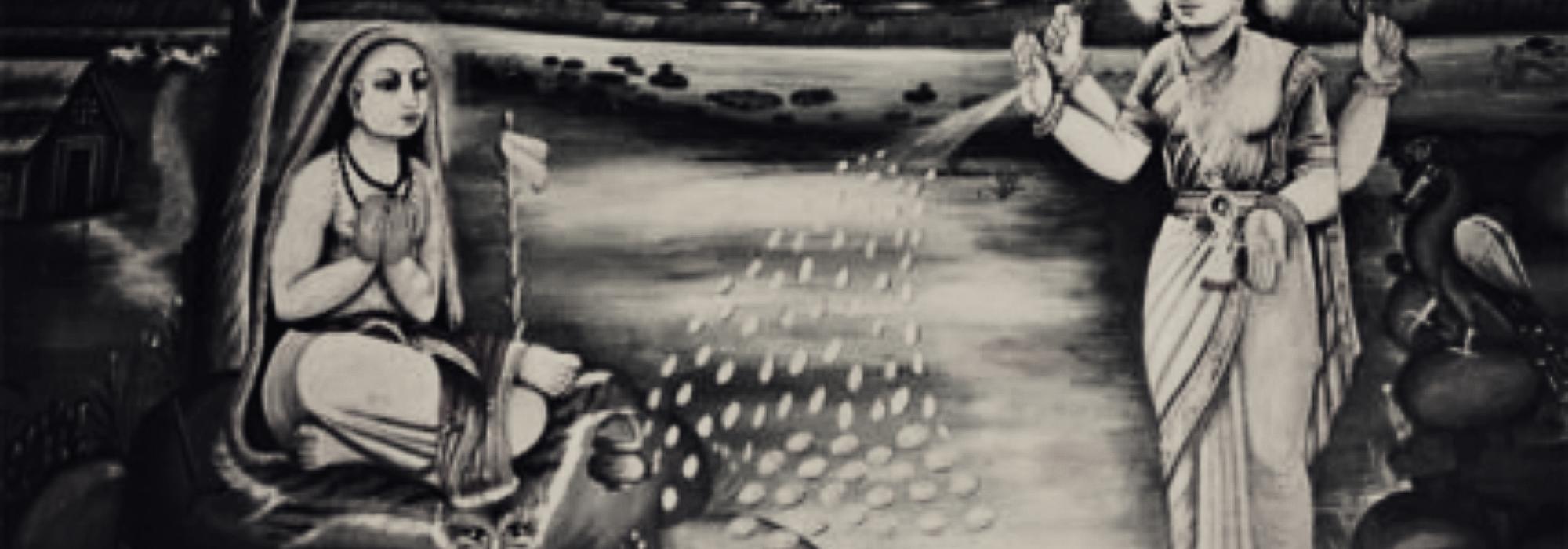The mirage-like Rama Rajya of Mohandas Gandhi at a very fundamental level of ethics essentially must rest on untruths. This is not to imply that Gandhi deliberately spoke untruths but his claims such as Sarvadharmasamabhava (equal validity of all religions), “Ram and Rahim are the same,” and Ishwar Allah tere naam are demonstrably false and are therefore lethal in practice. How for example, is it possible to have a Rama Rajya in a kingdom peopled with religious diktats that explicitly call Rama a false god that needs to be destroyed because the whole world belongs to Allah? This is the same false equivalence that we find in the mischievous meaning attributed to the Vedic verse[1], ekam sat viprā bahudhā vadanti, again an outcome of Gandhian misappropriation. This is also another fundamental reason that supports the claim that Gandhi’s Rama Rajya does not admit Dharma in the true sense.
DVG’s ideal and vision of Rama Rajya was a harmonious amalgamation of the original genius of Bharatavarsha that includes the collective wisdom, insights and legacy of our Rishis (and heroes like), Rama, Krishna, Kautilya and Vidyaranya, to the name the most outstanding ones. The Rama in DVG’s Rama Rajya was also a Jnani in the sense meant by Maharshi Vidyaranya in his immortal dictum[2] of jñāninā carituṃ śakyam samyak rājyādi laukikaṃ. The summary: DVG’s Rama Rajya implies a perfect harmony of Raga and Dwesha and a balance is maintained among the three gunas. Translated in the realm of the kingdom, statecraft, social and public life, this Rama Rajya properly ensures Dushta Shikshana (punishment of evil) and Shishta Rakshana (protection of the good). Both require the application of violence if need be. In other words, DVG’s Rama Rajya assigns the rightful place to the ancient and original Indian ideal and noble tradition of Kshatra[3] (spirit of valour). As recorded history shows, this is thoroughly contrary to Gandhi who wanted to establish his Rama Rajya through “winning hearts” by voluntarily sacrificing one’s life to the sword of the barbarian. Once more, we notice Gandhi’s false equivalence and selective quoting of the verse,
ahiṃsā paramo dharma |
dharma hiṃsā tathaiva ca ||
Non-violence is the greatest Dharma. As also is violence that is directed at preserving Dharma.
Mohandas Gandhi’s dense Ahimsa admits nary an illuminative ray of Kshatra, which in his view is equal to violence. In light of the discussions so far, the logical question arises whether his ideal deity and character, Sri Ramachandra’s victories over numerous demons including Ravana were actually a victory over their hearts.
From the same discussion, we can clearly see the truth in the great insight of D.V. Gundappa’s realistic ideal of Rama Rajya, which he terms is a sādhyasatya: an attainable truth.
The travesty of post-1947 India is that Gandhi’s Rama Rajya like the loosely-held planks of an attic floor, gave way to an indeterminate being called secularism whose very first victim was Mohandas Karamchand Gandhi himself.
To be continued
Notes
- The complete verse is as follows:
indraṃ mitraṃ varuṇamagnimāhuratho divyaḥ sa suparṇo garutmān।
ekaṃ sadviprā bahudhā vadantyagniṃ yamaṃ mātariśvānamāhuḥ ||
They called him Indra, Mitra, Varuṇa, Agni; and he is heavenly Garuda, who has beautiful wings. The truth is one, but the sages (or learned ones) call it by many names or describe him in many ways; they called him Agni, Yama, Mātariśvan. (Rg Veda 1.164.46).
It requires a tremendous leap of logic to interpret this verse to mean that the “Truth” meant here also includes prophetic Gods like Allah and the Christian God. - Translation: It is very well possible for the Jnani to engage in worldly duties such as administering a Kingdom.
- Ref: Shatavadhani Dr. R Ganesh: Bharatiya Kshatra Parampare (Rashtrotthana Sahtiya, Bangalore, 2016)













































